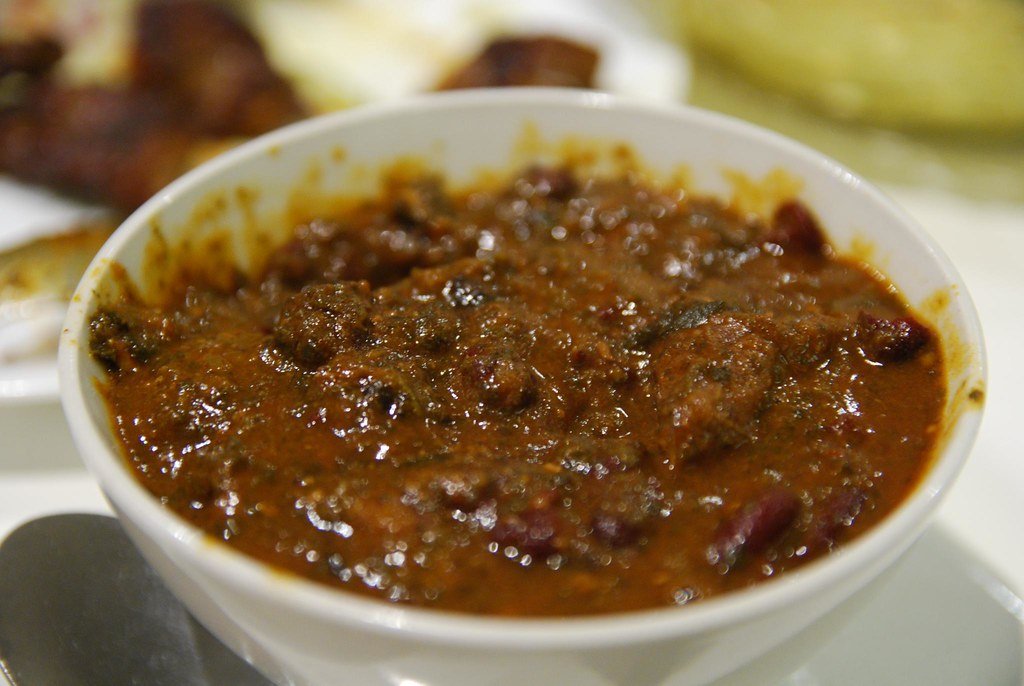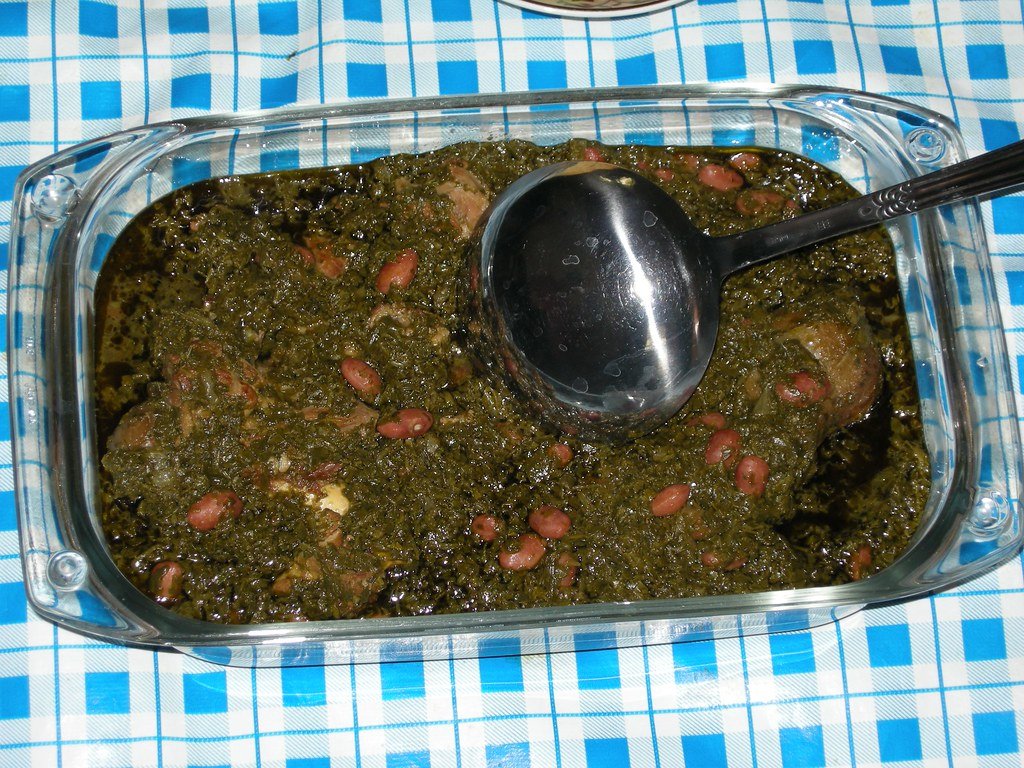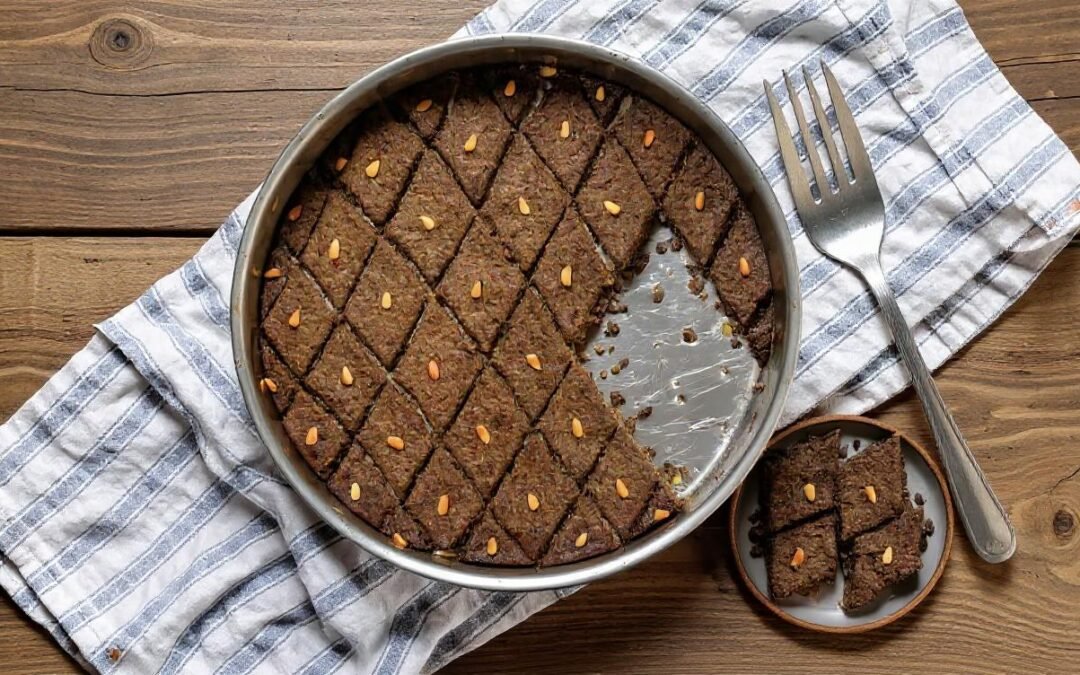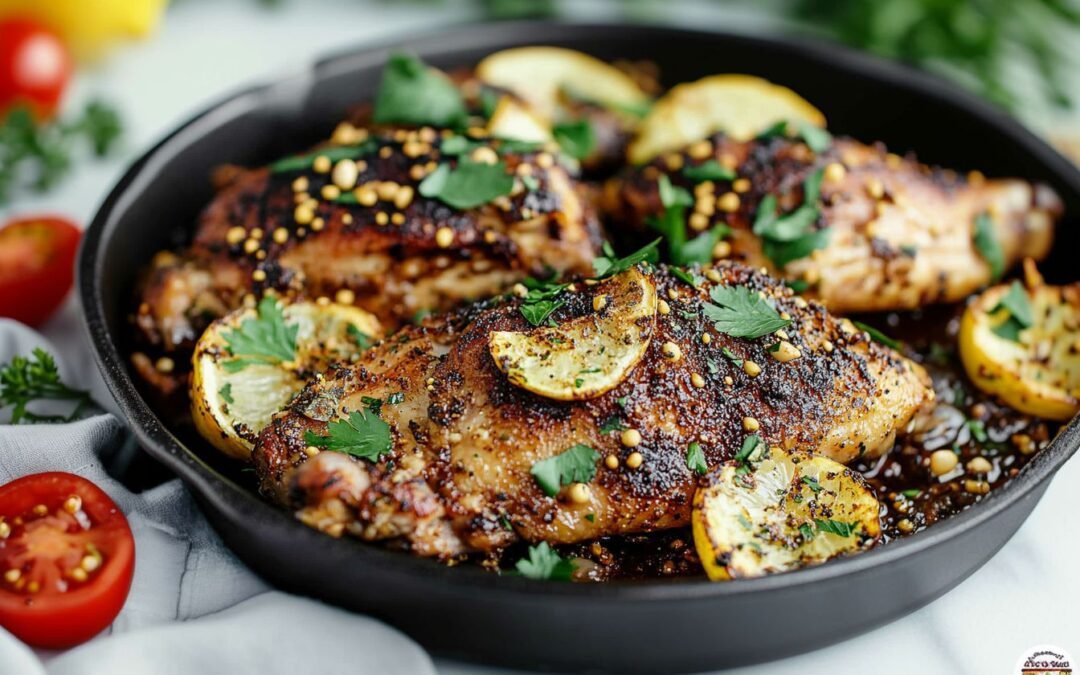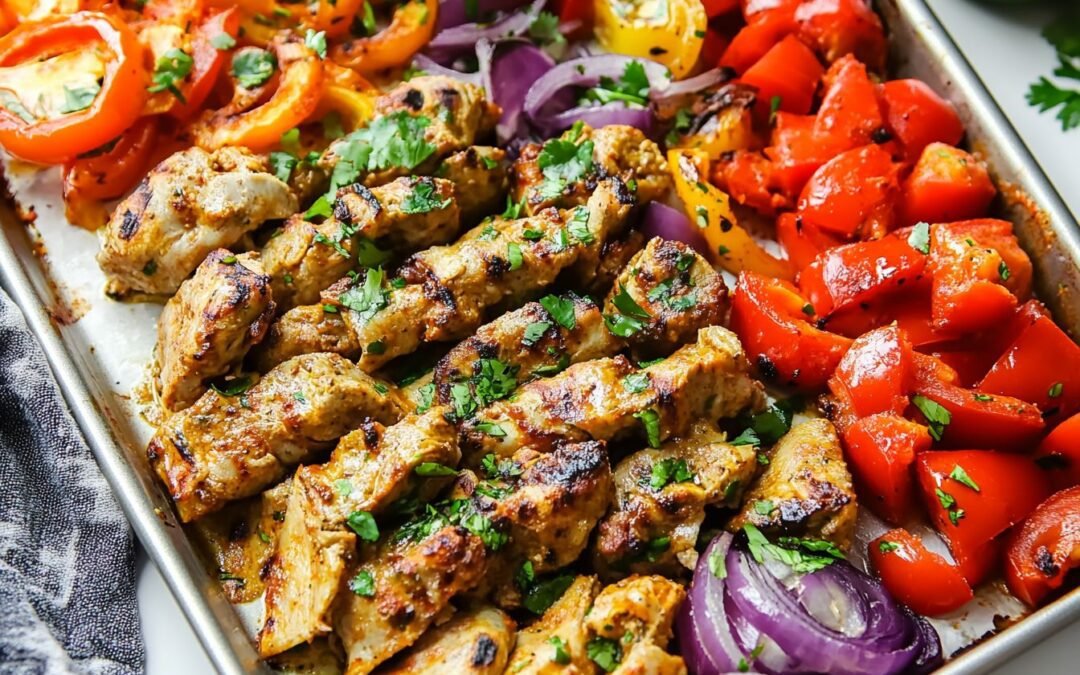I recently had the pleasure of dining at a Persian restaurant in New Jersey. There I was introduced to the delicious and flavorful dish known as Persian lamb ghormeh sabzi stew. This traditional Persian stew contains tender lamb, and a variety of herbs and vegetables, and is seasoned with tangy dried limes.
The dish is a staple in Persian cuisine and is often served during special occasions and celebrations. It is believed to have originated from the Caspian Sea region of Iran and has been passed down through generations. The stew showcases a unique and complex flavor profile achieved through a combination of carefully selected herbs and seasonings. It is sure to tantalize your taste buds with its delightful taste.
If you’re a fan of hearty stews and bold flavors, then the ghormeh sabzi stew is definitely worth trying. The dish is delicious and has a rich cultural history that adds to its appeal. Whether you’re new to Persian cuisine or a seasoned fan, this stew is sure to impress.
As I was enjoying my ghormeh sabzi, suddenly one of the waitresses started to sing. Her voice was beautiful and captivating, and it added to the already delightful ambiance of the restaurant.
The stew itself was a masterpiece. The lamb was tender, and the herbs and vegetables in the stew blended together perfectly. The dish was served with a side of fluffy basmati rice, which complemented the stew nicely.
I couldn’t help but notice the attention to detail in the presentation of the dish. The vibrant green herbs in the stew were a feast for the eyes. In addition, the colorful spices added a pop of color to the plate.
As I continued to savor each bite, I couldn’t help but feel grateful for the opportunity to try such a delicious and authentic Persian dish. The combination of flavors and textures was truly unforgettable.
Overall, the experience of enjoying this ghormeh sabzi was a highlight of my culinary adventures. I highly recommend it to anyone looking for a unique and flavorful dining experience.
After savoring the delicious flavors of the ghormeh sabzi, I knew I had to get my hands on the recipe. As soon as the song ended, I approached the chef and requested the recipe. To my surprise, he agreed to share the recipe with me.
The chef handed me a list of ingredients that included: lamb, kidney beans, an onion, garlic, turmeric, dried limes, parsley, cilantro, fenugreek leaves, green onion, avocado oil, dried lime, lime powder or lime juice, salt, and pepper.
When it comes to serving ghormeh sabzi, there are a variety of dishes that can be served alongside it to complement its flavors. Here are a few dishes that I recommend:
- Persian Rice: The classic accompaniment to any Persian dish, Persian rice contains saffron and butter to create a fragrant and flavorful side dish that pairs perfectly with the rich flavors of the stew.
- Mast-o-Khiar: This refreshing yogurt and cucumber dip is a perfect complement to the hearty flavors of the stew. Its cool and tangy flavors provide a nice contrast to the warm and savory stew.
- Shirazi Salad: Contains diced tomatoes, cucumbers, and onions, this fresh and crunchy salad is a great way to balance out the richness of the stew.
- Flatbread: A warm and fluffy flatbread is a great way to scoop up the stew and soak up all of the delicious flavors.
- Torshi: This tangy and sour pickled vegetable dish is a staple in Persian cuisine and pairs perfectly with the rich flavors of the stew.
Overall, there are many dishes that can be served alongside ghormeh sabzi to create a delicious and satisfying meal. Whether you choose to serve it with rice, yogurt dip, or a fresh salad, you can be sure that the flavors will complement each other perfectly.
Ingredients
To make a delicious Persian lamb ghormeh sabzi stew, you will need the following ingredients:
- 4 cups of chopped parsley (without the stems)
- 3 cups of chopped cilantro (without the stems)
- 1 cup of chopped green onions (only the green parts)
- ¾ cup of chopped fenugreek leaves (alternatively use 3 tablespoons of dried fenugreek leaves)
- 5 tablespoons of avocado oil
- 1 large sliced onion
- 1½ lbs o lamb with bone (cut in 2-inch pieces)
- 1 teaspoon of turmeric
- ½ teaspoon of ground black pepper
- salt to taste
- 1/2 cup of dried red kidney beans that have been soaked overnight and drained(alternatively use 15-oz. can of kidney beans)
- 4 whole dried limes
- 1 tablespoon of dried lime powder (alternatively use tablespoons of lime juice)
How to Make Persian Lamb Ghormeh Sabzi Stew?
To make a delicious and authentic ghormeh sabzi, follow these simple steps:
- After rinsing the herbs, ensure thorough drainage and then either spin them in a salad spinner or gently pat them dry. Proceed to finely chop the herbs.
- In a Dutch oven, heat 2 tablespoons of oil over medium-high heat. Sauté the sliced onions until they become translucent with light golden brown edges.
- Gently move the onions to the edges of the pot. Place the meat in the center and lightly brown it. Incorporate turmeric, black pepper, and a pinch of salt. Pour in 3 cups of water and bring it to a boil.
- Reduce the heat, then add the drained beans and let them simmer for a duration of 30 minutes.
- While the beans are simmering, heat 3 tablespoons of oil in a nonstick skillet. Sauté the chopped herbs for 20 to 25 minutes, stirring regularly, until the enticing aroma of roasted herbs permeates the air.
- Incorporate the sautéed herbs into the Dutch oven and continue simmering the stew for an additional 30 minutes.
- With a paring knife, make small incisions in the dried limes, then add them to the stew and simmer until the meat becomes tender and easily falls off the bone, and the beans reach a tender consistency. This process typically takes around 30 to 60 minutes.
- During the final 30 minutes, introduce dried lime powder or lime juice to the stew, adjusting the amount according to your personal preference.
- Ensure that the stew achieves a thick consistency rather than being watery. Adjust the texture, salt, lime, and other seasonings to your desired taste.
- Serve the hot stew alongside steamed rice for a delightful meal. It’s worth noting that the flavors of the stew tend to further enhance when enjoyed the following day!
Making this stew may seem intimidating at first, but with these easy steps, you can create a flavorful and satisfying dish that will impress your friends and family.
Serving Suggestions
When it comes to serving ghormeh sabzi, there are a few things to keep in mind to ensure the best possible dining experience. Here are some serving suggestions that I recommend:
- Rice: Ghormeh sabzi is traditionally served with white rice. The fluffy texture and mild flavor of the rice complement the bold and savory flavors of the stew perfectly. I suggest cooking basmati rice, which has a slightly nutty flavor and aroma that pairs well with the dish.
- Yogurt: A dollop of plain yogurt on top of the stew adds a refreshing and cooling element to the dish. It also helps balance out the richness of the lamb and the boldness of the herbs and spices.
- Bread: Serve some warm and crusty bread on the side to soak up the flavorful sauce of the stew. A traditional Persian flatbread called lavash is a great option.
- Pickles: Persian cuisine often incorporates pickled vegetables as a side dish. I suggest serving some pickled vegetables, such as cucumbers or carrots, on the side to add a crunchy and tangy element to the meal.
Overall, serving ghormeh sabzi with rice, yogurt, herbs, bread, and pickles is a delicious and satisfying meal that is sure to impress your guests.
Nutritional Facts
As someone who is health-conscious, I always like to know the nutritional value of the food I eat. So, I did some research on the dietary facts of Persian lamb ghormeh sabzi stew, and here’s what I found:
- One serving o ghormeh sabzi (around 1 cup) contains approximately 300-400 calories, depending on the recipe and serving size.
- The stew is a good source of protein, with around 20-30 grams per serving, thanks to the lamb and kidney beans.
- The stew also contains a variety of vegetables, including parsley, and cilantro, which are rich in vitamins and minerals such as vitamin A, vitamin C, iron, and potassium.
- However, it’s important to note that the stew can be high in sodium, especially if you use canned kidney beans or store-bought broth. To reduce the sodium content, you can use low-sodium broth and cook your own beans from scratch.
- Additionally, the stew contains a moderate amount of fat, mostly from the lamb, which can be high in saturated fat. To make the stew healthier, you can trim the fat from the lamb or use leaner cuts of meat, such as sirloin or leg of lamb.
Overall, ghormeh sabzi can be a nutritious and satisfying meal, especially when served with a side of whole grains, such as brown rice or quinoa, and a salad. Just be mindful of the sodium and fat content, and adjust the recipe accordingly to fit your dietary needs and preferences.
Common Variations
When it comes to ghormeh sabzi, there are many variations that you can try out. Here are a few common ones that you might want to consider:
- Vegetarian version: If you’re looking for a vegetarian version of this stew, you can replace the lamb with mushrooms or eggplant. You can also add some chickpeas or kidney beans for extra protein.
- Beef version: If you’re not a fan of lamb, you can substitute it with beef. However, keep in mind that the cooking time will be longer for beef, so you’ll need to adjust accordingly.
- Chicken version: For a lighter version of this stew, you can use chicken instead of lamb. This will also reduce the cooking time, so you can have the stew ready in no time.
- Spice variations: You can also play around with different spices to give your stew a different kick. Some popular spices used in Persian cuisine include turmeric, cumin, and cinnamon.
Overall, there are many ways to customize your ghormeh sabzi to suit your taste preferences. Don’t be afraid to experiment with different ingredients and flavors to create your own unique version of this classic dish.
Conclusion
In conclusion, I must say that Persian lamb ghormeh sabzi stew is a dish that is worth trying. It is a flavorful, nutritious, and hearty stew that can be enjoyed on any occasion. Here are some key takeaways from my experience with this dish:
- The combination of lamb, herbs, and beans creates a unique and delicious flavor that is hard to resist.
- Cooking this dish requires some preparation and patience, but the end result is well worth the effort.
- This stew is a great option for those who are looking for a healthy and filling meal, as it contains a variety of vegetables and protein sources.
- The leftovers of this stew can be easily stored and reheated, making it a convenient option for meal prep.
Overall, I highly recommend giving Persian lamb ghormeh sabzi stew a try. Whether you are a fan of Middle Eastern cuisine or simply looking for a new and exciting dish to add to your repertoire, this stew is sure to satisfy your taste buds.
